|
Books Should Be Free Loyal Books Free Public Domain Audiobooks & eBook Downloads |
|
|
Books Should Be Free Loyal Books Free Public Domain Audiobooks & eBook Downloads |
|
Animal Books |
|---|
Book type:
Sort by:
View by:
|
By: Albert Payson Terhune (1872-1942) | |
|---|---|
 Bruce
Bruce
Albert Payson Terhune was a journalist but is probably best known as a breeder of dogs, in particular collies at his Sunnybank Kennels. Bruce charts the story of an unwanted puppy who becomes loved by the mistress of the family. He then becomes enlisted as a carrier dog in World War 1, completing heroic tasks and coming home a war hero | |
 Treve
Treve
Treve is a gloriously beautiful and madly alive collie that finds himself, through a series of lucky and unlucky events, on a sheep ranch in the West. He is owned by the two bosses of the ranch, and he finds his way into the heart of each of these very different partners. Treve's life is filled with one adventure after another. - Summary by jjschmidt | |
 Lad: A Dog
Lad: A Dog
Lad: A Dog is a 1919 American novel written by Albert Payson Terhune and published by E. P. Dutton. Composed of twelve short stories first published in magazines, the novel is based on the life of Terhune's real-life rough collie, Lad. Born in 1902, the real-life Lad was an unregistered collie of unknown lineage originally owned by Terhune's father. Lad's death in 1918 was mourned by many of the story's fans, particularly children. | |
 Heart of a Dog
Heart of a Dog
Dogs! Many of us love them and they love us unconditionally. But is he a soft teddy bear or a ferocious guard dog? | |
By: Enos A. Mills (1870-1922) | |
|---|---|
 Adventures of a Nature Guide
Adventures of a Nature Guide
Enos Mills , naturalist and conservationist, was instrumental in the creation of Rocky Mountain National Park. Like his mentor John Muir, Mills was an intrepid solitary high country rambler, as well as an accomplished Colorado mountain guide. There are mountain tales aplenty in "Adventures of a Nature Guide." At one point, Mills climbs Long's Peak alone in a gale with winds topping 170 mph., "carried away with the wild, elemental eloquence of the storm." Near the summit, the wind is so fierce he cannot make headway, so he concludes to "reverse ends... | |
By: Ethel C. Pedley (1859-1898) | |
|---|---|
 Dot and the Kangaroo (version 2)
Dot and the Kangaroo (version 2)
A 5-year-old girl named Dot is lost in the outback after chasing a hare into the wood and losing sight of her home. She is approached by a red kangaroo who gives her some berries to eat. Upon eating the berries, Dot is able to understand the language of all animals, and she tells the kangaroo her plight. The kangaroo, who has lost her own joey, decides to help little Dot despite her own fear of humans. The book is filled with criticism on negative human interference in the wild in 1884. | |
By: Joaquin Miller (1837-1913) | |
|---|---|
 True Bear Stories
True Bear Stories
Joaquin Miller dedicated this book to "my dear little daughter...for whose pleasure and instruction I have many times dug up the most of these stories from out the days of my boyhood." In his preface he claims to prefer true stories to made-up ones. And he always defends bears, which he thinks have gotten an undeserved bad reputation from the general populous. Miller strives here to pass on a respect for the variety and wisdom in the lives of real bears. But perhaps we should offer one caution: throughout his life Joaquin Miller gained a reputation for being a supreme liar! | |
By: Katharine Elizabeth Dopp (1863-1944) | |
|---|---|
 Early Cave-Men
Early Cave-Men
The People Who Wanted To Live in Caves. This little book takes us back to the time when our ancestors lived, or wanted to live, in caves. Unfortunately the caves of that time were mostly used by large animals like the Sabre Toothed Tiger and bears who could easily kill and eat our ancestors. Thus the subtitle of this book is The Age of Combat. This book, aimed at children, tries to show how certain things could have taken place to enable our species to eke out a living alongside the much stronger beasts, such as why we wanted to live in caves; the hazards and rewards of living in caves; the taming of fire; and how early tools were invented... | |
By: Laura Rountree Smith (1876-1924) | |
|---|---|
 Twinkle Toes and His Magic Mittens
Twinkle Toes and His Magic Mittens
Another delightful Laura Rountree Smith children's book. Illustrated by F. R. Morgan We are three little kittens Who once lost our mittens The kittens now go about having adventures with their friend, Twinkle Toes, and learning valuable life lessons along the way. - Summary by JHedrick | |
 Tale of Bunny Cotton-Tail
Tale of Bunny Cotton-Tail
Little Bunny Cotton-tail is a very naughty bunny. He runs away, he won't go to school, and he keeps nibbling on Farmer Jones' cabbage! Mother Bunny will have to ask for help to get her little bunny to behave. | |
By: Pliny the Elder (23-79) | |
|---|---|
 Natural History Volume 3
Natural History Volume 3
Naturalis Historia (Latin for "Natural History") is an encyclopedia published circa AD 77-79 by Pliny the Elder. It is one of the largest single works to have survived from the Roman empire to the modern day and purports to cover the entire field of ancient knowledge, based on the best authorities available to Pliny. The work became a model for all later encyclopedias in terms of the breadth of subject matter examined, the need to reference original authors, and a comprehensive index list of the contents... | |
By: Sarath Kumar Ghosh (1883-?) | |
|---|---|
 Wonders of the Jungle
Wonders of the Jungle
How do elephants drink? What is the Law of the Jungle at the water hole? How does an elephant baby learn to feed and learn to swim? How do they walk under water? In what order do buffaloes drink? How do buffaloes fight the tiger? These and other wild inhabitants of the Indian jungle such as pigs, wild dogs, deer, camels, bears and birds are discussed in lively stories to entertain but mainly educate children of school age. "One of the great thinkers of the world has said that all the sciences are embodied in natural history... | |
By: Various | |
|---|---|
 Coffee Break Collection 008 - Animals
Coffee Break Collection 008 - Animals
This is the eighth collection of our "coffee break" series, involving public domain works that are between 3 and 15 minutes in length. These are great for work/study breaks, commutes, workouts, or any time you'd like to hear a whole story and only have a few minutes to devote to listening. This collection about animals includes tales and essays about the many creatures of land, sea, and air! | |
 From the Tower Window of My Bookhouse
From the Tower Window of My Bookhouse
Full of delightful fairy tales, charming poems and engaging stories, this is the fifth volume of the "My Bookhouse" series for little ones. Originally published in the 1920's as a six volume set, these books, edited by Olive Beaupre Miller, contained the best in children's literature, stories, poems and nursery rhymes. They progressed in difficulty through the different volumes. Note: Due to a numbering error, the audio introductions do not say "Section 6" but jump from 5 to 7. There is no text missing. | |
By: A. A. Milne (1882-1956) | |
|---|---|
 Winnie-the-Pooh (Version 2)
Winnie-the-Pooh (Version 2)
A charming collection of 10 relaxing tales, come along into the Forest as Winnie-the-Pooh tries to get some honey, the search is on for Eeyore's tail, some new visitors arrive in the form of Kanga and Baby Roo and an 'Expotition' is held to discover the North Pole! A classic for over 95 years and one that everyone young and old will surely adore. | |
By: Abbie Farwell Brown (1871-1927) | |
|---|---|
 Curious Book of Birds
Curious Book of Birds
Now the interesting facts about birds we have always with us. We can find them out for ourselves, which is a very pleasant thing to do, or we can take the word of others, of which there is no lack. But it is the quaint fancies about birds which are in danger of being lost. The long-time fancies which the world's children in all lands have been taught are quite as important as the every-day facts. They show what the little feathered brothers have been to the children of men; how we have come to like some and to dislike others as we do; why the poets have called them by certain nicknames which we ought to know; and why a great many strange things are so, in the minds of childlike people. | |
By: Aesop (620 BC - 563 BC) | |
|---|---|
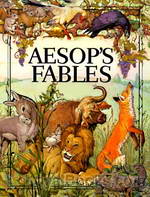 Aesop's Fables
Aesop's Fables
As children, our first experience of the magic of talking animals, the conflict between good and evil, the battle of wits between the cunning and the innocent most probably came from Aesop's Fables. These delightful, pithy and brief narratives are simple, easy to understand and convey their message in a memorable and charming fashion. Aesop's Fables by Aesop consists of about 600 tales, some well-loved and familiar, others less known but just as entertaining and educative and help us map the perimeters of our moral universe... | |
 The Aesop for Children
The Aesop for Children
THE AESOP FOR CHILDRENTHE WOLF AND THE KIDThere was once a little Kid whose growing horns made him think he was a grown-up Billy Goat and able to take care of himself. So one evening when the flock started home from the pasture and his mother called, the Kid paid no heed and kept right on nibbling the tender grass. A little later when he lifted his head, the flock was gone. He was all alone. The sun was sinking. Long shadows came creeping over the ground. A chilly little wind came creeping with them making scary noises in the grass... | |
By: Albert Payson Terhune (1872-1942) | |
|---|---|
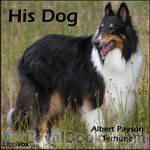 His Dog
His Dog
Albert Payson Terhune, perhaps best known for his book Lad, a Dog (later turned into a popular movie), was also a breeder of collies and a journalist. Some of his collie lines survive to this day. His Dog is a story about Link Ferris who finds an injured dog on his way home one evening. Knowing nothing about dogs, Link nurses the dog back to health and the two form a bond such as only can be formed between human and canine. Unable to locate the collie’s owner, Link christens his dog ‘Chum’ who becomes invaluable in tending to the daily needs of his meager farm... | |
By: Alec John Dawson (1872-1951) | |
|---|---|
 Finn The Wolfhound
Finn The Wolfhound
Dawson published over thirty books, the one best remembered today probably being the animal adventure story Finn the Wolfhound (1908)…. His own dog Tynagh and her son Gareth, who was described as the largest and finest specimen of his breed to date, served as the models for Tara and Finn in Finn the Wolfhound (1908). This is probably Dawson’s best-remembered and certainly his most frequently reprinted work: Finn, a champion Irish Wolfhound, is taken from England to Australia where he undergoes a series of adventures, being exhibited as a wild animal in a circus and escaping to live in the outback before eventually finding his old master and saving his life. | |
By: Allen Chaffee (1885-1985) | |
|---|---|
 Chinook the Cinnamon Cub
Chinook the Cinnamon Cub
Allen Chaffee is author of numerous children's books including the Fuzz Wuzz series and a popular rendition of Hiawatha as well as The World of Oz. Here we join the adventures of a the mischievous cub bear, Cinnamon. - Summary by Larry Wilson | |
By: Amy Ella Blanchard (1856-1926) | |
|---|---|
 Kittyboy's Christmas
Kittyboy's Christmas
Is Santa Claus real? Six year old Elinor thinks so as she sends her letter, and persuades her friend Bill to do likewise. On the other side of town, a stray kitten adopts a lonely bachelor. As the two worlds come together, the magic of Christmas is kept alive for all ages in this heart-warming tale. | |
By: Anna Sewell | |
|---|---|
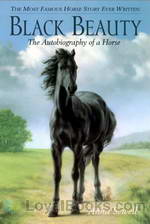 Black Beauty
Black Beauty
This unique tale is narrated by a lovely, gentle horse named Black Beauty and has remained a children's classic since it was first published in 1877. It earned eternal name and fame for its author Anna Sewell, an invalid who died within a few months of publication. According to current estimates, it has sold more than fifty million copies world wide, been translated into many languages and delighted generations of children. The original title page reads: Black Beauty: Translated from the original Equine by Anna Sewell and this gives the reader an instant glimpse into what the book will be about... | |
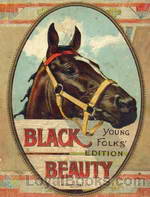 BLACK BEAUTY - Young Folks Edition
BLACK BEAUTY - Young Folks Edition
The same beloved story of the adventures and misadventures and of a young horse that we all know and love, but rewritten by the author for young people with much shorter chapters. All of the pathos, tenderness and fun are still there, just written for a younger audience. While forthrightly teaching animal welfare, it also teaches how to treat people with kindness, sympathy, and respect. | |
By: Anton Chekhov (1860-1904) | |
|---|---|
 Kashtanka
Kashtanka
"Kashtanka," a shaggy-dog story penned by Anton Chekhov in seven parts and first published in 1887, relates the experiences of its eponymous heroine, a fox-faced, reddish dachshund-mix, whose name means 'little chestnut.' After her detestation of music causes her to become separated from the carpenter with whose family she had been living, Kashtanka finds herself taken up by an unusual vaudevillian and goes to live among an assortment of other intelligent animals, each of whom is observed with the characteristic empathy and humor that stamp Chekhov's work. | |
By: Arabella B. Buckley (1840-1929) | |
|---|---|
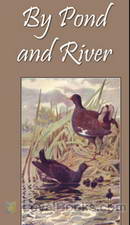 By Pond and River
By Pond and River
In By Pond and River, another of Arabella Buckley’s wonderful science books for children, she explains the habitats of ponds and rivers, exposing children to the animals and plant life that are found there. | |
By: Aristotle (384 BCE-322 BCE) | |
|---|---|
 History of Animals
History of Animals
Book I Grouping of animals and the parts of the human body. Book II Different parts of red-blooded animals. Book III Internal organs. Book IV Animals without blood . Books V & VI Animal reproduction. Book VII Human reproduction. Book VIII Habits . Book IX Social behavior. Book X Dealing with barrenness in women was excluded from the translation of D'Arcy Thompson for being spurious so the translation of the Clergyman Richard Cresswell is used instead. Sir D'Arcy Wentworth Thompson was a biologist, mathematician and classicist who also wrote On Growth and Form which discusses the mathematical patterns and structures formed in plants and animals. | |
 Movement & Progression of Animals
Movement & Progression of Animals
Movement of Animals begins with a discussion of the physics of motion and asks whether God, the Unmoved Mover, exists outside of our Universe. Progression of Animals asks why animals have the parts they do and to what end these parts are possessed. - Summary by Geoffrey Edwards | |
By: Arthur Scott Bailey (1877-1949) | |
|---|---|
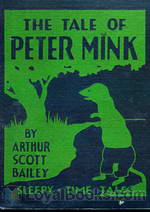 The Tale of Peter Mink
The Tale of Peter Mink
Arthur Scott Bailey (1877 – 1949) was author of more than forty children’s books. Bailey’s writing has been described thusly by the Newark Evening News: “Mr. Bailey centered all his plots in the animal, bird and insect worlds, weaving natural history into the stories in a way that won educator’s approval without arousing the suspicions of his young readers. He made it a habit to never ‘write down’ to children and frequently used words beyond the average juvenile vocabulary, believing that youngsters respond to the stimulus of the unfamiliar.” | |
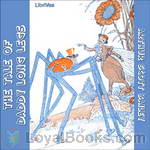 The Tale Of Daddy Long Legs
The Tale Of Daddy Long Legs
Summary text (Arthur Scott Bailey (1877 – 1949) was author of more than forty children’s books. He was born on November 15, 1877, in St. Albans, Vermont, United States, the second child of Winfield Scott Bailey and Harriet Sarah Goodhue. THERE was great excitement in the neighborhood of Farmer Green’s house. Rusty Wren had found some strange tracks. And nobody knew whose they were. Now, when they were puzzled like that the field- and forest-folk usually went straight to Mr. Crow for advice... | |
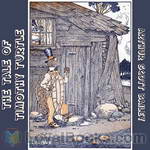 The Tale of Timothy Turtle
The Tale of Timothy Turtle
One of Bailey’s “Sleepy-Time Tales,” this is the story of Timothy Turtle, a grumpy old turtle trying to live his life alongside Black Creek. Timothy’s adventures lead him to encounters with other Black Creek creatures, Fatty Coon, Mr. Crow, Brownie Beaver, Peter Mink, Ferdinand Frog, and even the local boy, Johnnie Green. | |
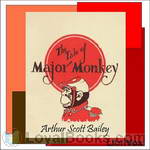 The Tale of Major Monkey
The Tale of Major Monkey
Arthur Scott Bailey was the author of more than forty children’s books.Mr. Bailey centered all his plots in the animal, bird and insect worlds, weaving natural history into the stories in a way that won educator’s approval without arousing the suspicions of his young readers. | |